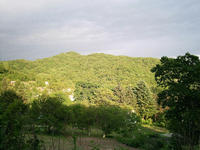You are in: Europe -> Russia -> Central Sikhote-Alin, and traditional search or Image Gallery will yield results of this site only
Central Sikhote-Alin
| Site number: | 766 |
|
| Type of site: | Natural | |
| Date: | - | |
| Date of Inscription: | 2001 | |
| Location: | Eurasia, Russia, Primorski Region, Ternejski, Krasnoarmejski, Dalnegorski, and Pozharski Districts | |
Up to 75 images are shown here. Click on each for more details or on Image Gallery for more images.
Six official UN languages:
Arabic,
Chinese,
English,
French,
Russian,
Spanish
Other languages: Belarusian, Dutch, German, Hungarian, Italian, Japanese, Korean, Norwegian-bokmål, Polish, Slovak, Vietnamese
Other languages: Belarusian, Dutch, German, Hungarian, Italian, Japanese, Korean, Norwegian-bokmål, Polish, Slovak, Vietnamese
| Description: | The Sikhote-Alin mountain range holds one of the world’s richest and most unusual temperate forests. This assorted zone sandwiched between taiga and subtropics, houses southern species such as the tiger and Himalayan bear that cohabit with northern species such as the brown bear and lynx. Extending from the peaks of Sikhote-Alin to the Sea of Japan, the site is significant for the survival of many endangered species, for instance the Amur tiger. --WHMNet paraphrase from the description at WHC Site, where additional information is available. | |
| The Sikhote-Alin (also spelled Sikhotae-Alin) is a mountain range in Primorsky and Khabarovsk Krais, Russia, extending about 900 km to the northeast of the Russian Pacific seaport of Vladivostok. The highest summits are Tordoki Yani (2,077 m) and Anik Mountain (1,933 m). Sikhote-Alin comprises one of the most extraordinary temperate zones in the world. Species typical of northern taiga (such as reindeer and the brown bear) coexist with tropical species, the Amur leopard, Siberian tiger, and the Himalayan bear. The oldest tree in the region is a millennium-old Japanese yew. In the 1910s and 1920s, Sikhote-Alin was extensively explored by Vladimir Arsenyev (1872–1930) who described his adventures in several books, notably Dersu Uzala (1923), which in 1975 had been turned into an Oscar-winning film by Akira Kurosawa. The large Sikhote-Alin and Lazo wildlife refuges were set up in 1935 to preserve the region's unusual wildlife. In 2001, UNESCO inscribed Sikhote-Alin onto the World Heritage List, citing its importance for "the survival of endangered species such as the Chinese merganser, Blakiston's Fish Owl, and the Amur tiger". --Wikipedia. Text is available under the Creative Commons Attribution-ShareAlike License. | ||
| Source: | http://whc.unesco.org/en/list/766 | |
| Reference: | 1. UNESCO World Heritage Center, Site Page. | |


